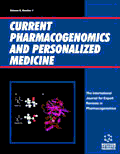
Full text loading...
We use cookies to track usage and preferences.I Understand
The escalating challenge of multidrug resistance among ESKAPE pathogens has become a prominent concern for global healthcare providers, leading to amplified morbidity and mortality rates.
We conducted this study to elucidate the genetic architecture of ESKAPE constituents with the intent of ameliorating pathogenicity and facilitating drug development efforts. A comprehensive array of computational tools and statistical methodologies were employed to scrutinize the genomes of ESKAPE pathogens.
Translational selection profoundly influences the codon usage bias within this pathogenic cohort. Notably, leucine emerged as the predominant amino acid, except in the case of Acinetobacter baumannii, where arginine exhibited preeminence. There was a universal preference for at least one histidine codon across all ESKAPE pathogens. GpC emerged as the most prominently overrepresented dinucleotide at the codon pair junction in all ESKAPE pathogens. Furthermore, a comparison of gyrB gene sequences and phylogenic tree construction showed a distinct evolutionary relationship between AT-rich and GC-rich ESKAPE pathogens. Additionally, identification, characterization, and phylogenetic analysis of multiple antibiotic resistance genes revealed distinct evolutionary relationships.
It was discerned that despite substantial variability amongst antibiotic resistance genes of pathogens, leucine emerged as the predominant amino acid.

Article metrics loading...

Full text loading...
References


Data & Media loading...
Supplements

